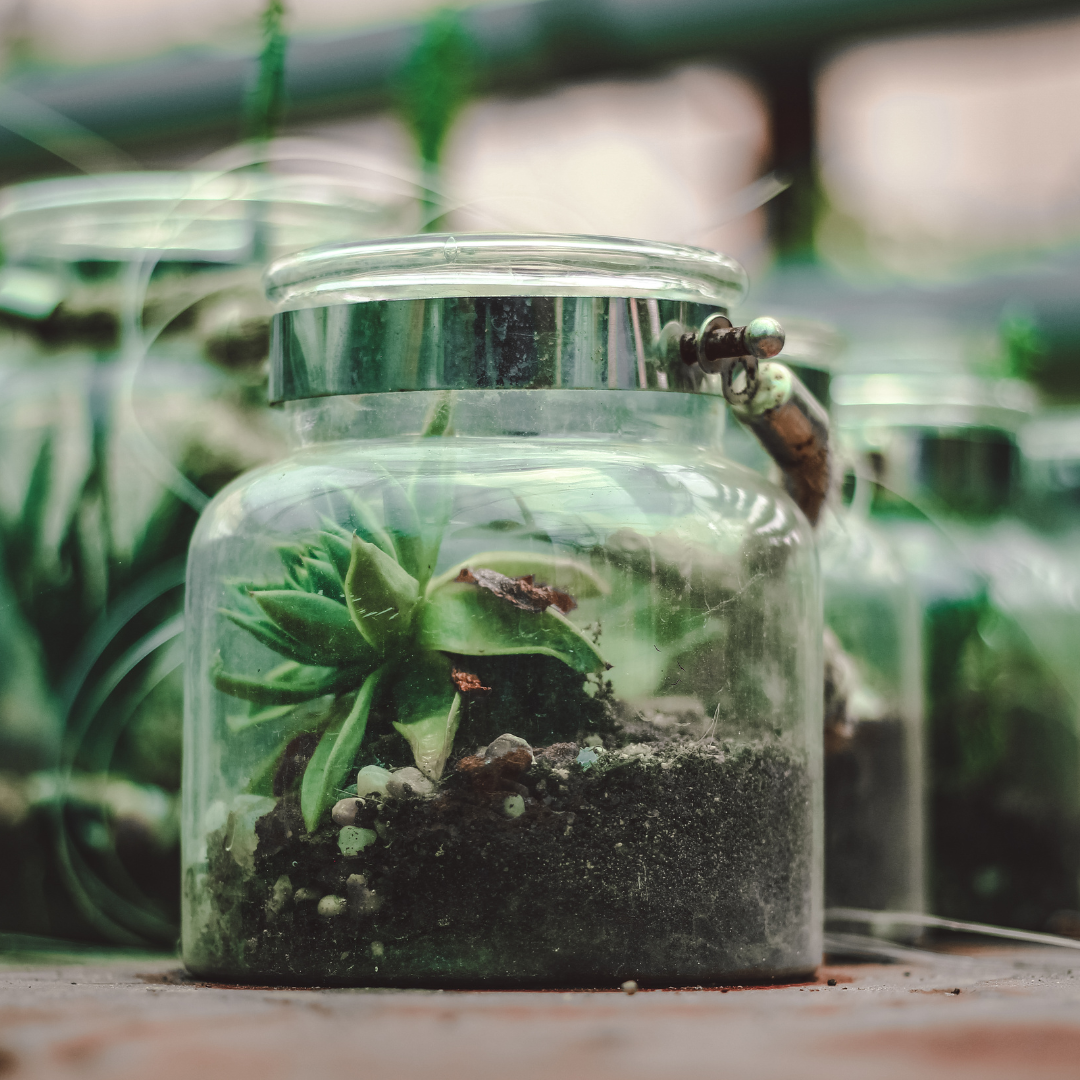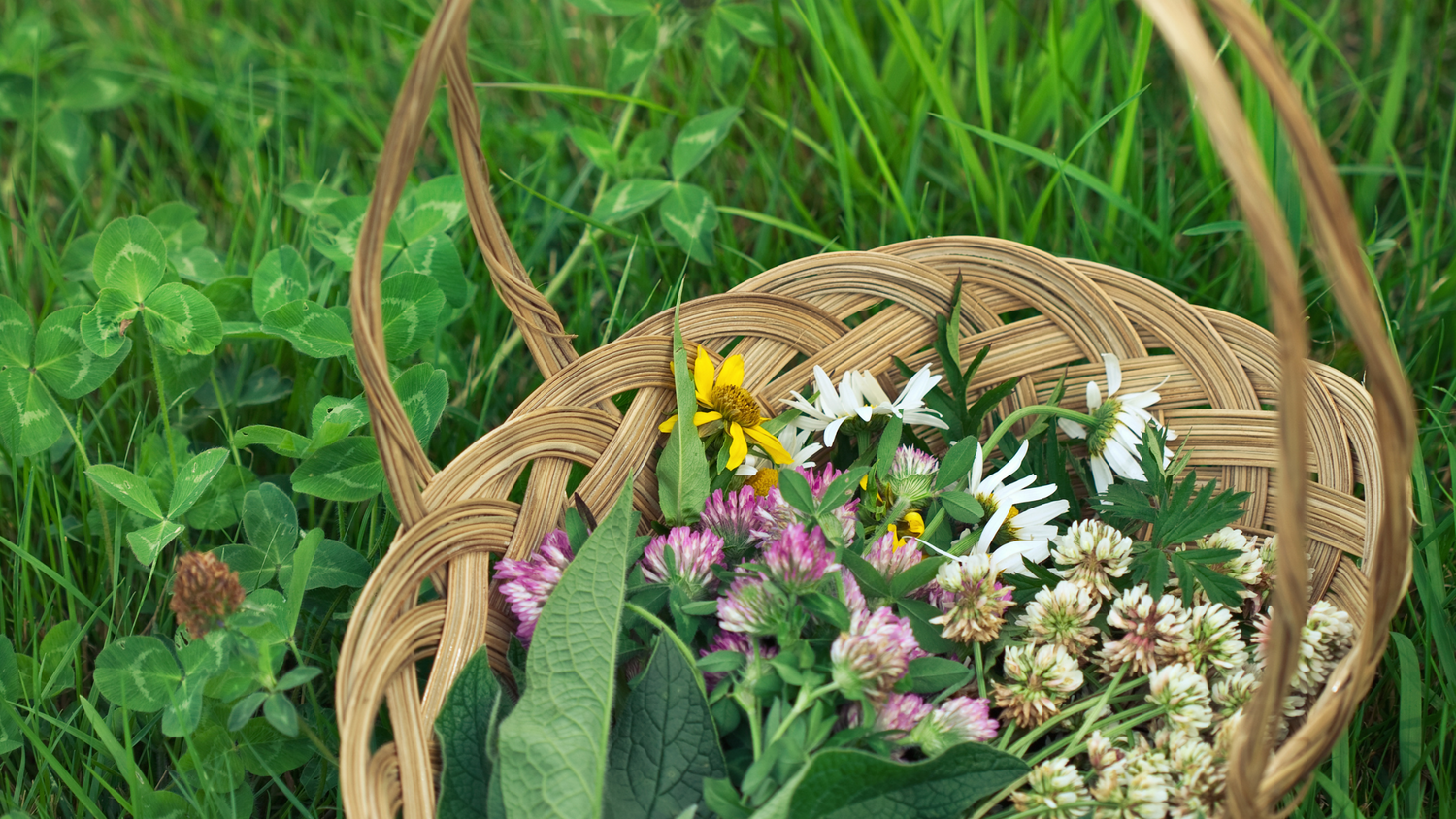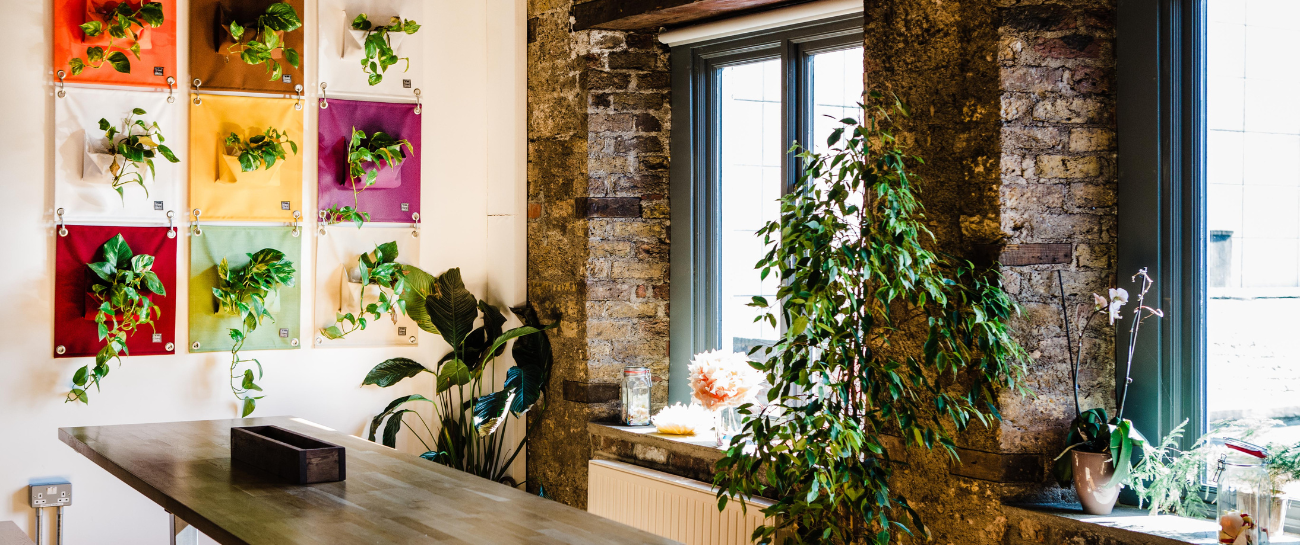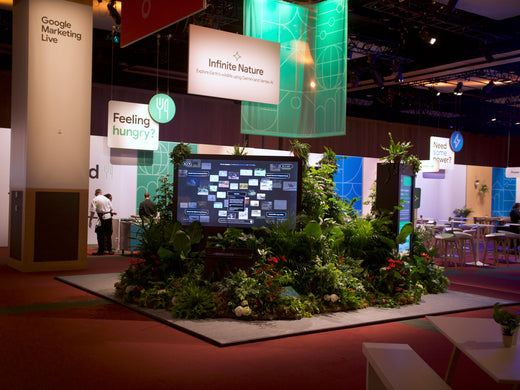Showcased in your home or perched with pride on your desk at work, terrariums enable you to design and create tiny ecosystems inside a glass enclosure of wonder!
They’re perfect for people like me who love the natural world but live in the city with no garden and little space for plants. Or for people who’d like a stunning collection of exotic plants that require very little maintenance.
In this blog, we will dive deeply into the wonderful world of terrariums, covering their exciting backstory, the many types + how you can create a mini glass garden of your own.
But first, what exactly are terrariums?
Terrariums are sealed glass containers with plants at their core; it’s a tiny ecosystem making its own atmosphere, its own world, sealed inside glass.
The term “terrarium” comes from the Latin terra (“earth”) + arium (a place or receptacle). Like an aquarium, just plants and earth instead of fish and water.
It is a tiny version of our planet and works exactly the same. Moisture evaporates and rises from the bottom of the terrarium. The moisture condenses on the glass roof, forms water droplets and then falls back to the bottom and irrigates the compost and roots of the plants. Once planted, watered and sealed, a terrarium doesn’t need any more water and will grow happily for decades.
Today Terrariums are very popular, glass jars filled with soil and plants sitting on someone’s windowsill are not uncommon. I’ve seen them in boutique clothing shops and standing in arms at pedestrian crossings. Also, they are so easy to make and much easier to look after than pot plants. So the excuse “I’m just no good at house plants” is no excuse.

The adventurous journey of the Terrarium
Everyone has a back story, your journey that brought you here. But we’ve seen nothing compared to the terrarium, hands down; it’s had the most adventurous life!
Terrariums have been around since the middle of the 19th century. In fact, the first terrarium was created in 1842 by botanist, Dr Nathaniel Ward in London.
Nathaniel was fascinated by insect behaviour and had incidentally left one of the jars used for observing insect behaviour unattended. A fern spore within the glass walls of the enclosed jar germinated and grew into a fern! – and so the first terrarium was born!
This was an exciting invention for Plant hunters, who were now able to protect and transport sensitive tropical plants all around the world.
Twelve years later, terrariums were used by smugglers to steal tea plants from China to India. This industrial espionage became known as the greatest theft of trade secrets in the history of mankind. Tea supply was now guaranteed, and the price dropped so much so, that it became the most popular drink of all classes in Britain. And, of course, the most popular term of affection came into being “you’re my cup of tea”.
The various type of Terrariums
The beauty of terrariums is that they come in all shapes & sizes and can be designed specifically for you. However, to narrow it down, there are generally two main types of terrariums; open & closed. Both are made from a selection of compatible plants (plants that need the same growing conditions), and they live in an enclosed, or partially enclosed, clear container.
Whether you choose, an open or closed type will be determined by the plants you want to grow.
For succulents and cacti, we recommend an open container that allows you to control the moisture. For more tropical plants like ferns and mosses, you’ll need a closed container to trap the moisture and heat.

Caring for your Terrarium: Our Top Tips
Terrariums are relatively low maintenance, making them perfect companions for busy plant parents or the not-so-green-fingered.
In saying this, there are a few straightforward things you can do to keep your terrariums happy & healthy.
Using a funnel, hydrate your terrarium with approximately 500ml of water, guiding equal parts of water to the base of each plant. Allow the water to permeate into the compost for a few hours before sealing the terrarium.
Keep in a bright spot, away from direct sunlight. After 6 weeks, check your terrarium to see if there is sufficient moisture. If required, you can open the cork + add a little more water/spray. At this stage, your terrarium will have transformed into a self-sustaining ecosystem & should not need to be opened again unless dry.
From time to time, remove any dead, dying or diseased foliage and prune the plants if they do get too large but don’t fertilise the plant and ensure the plants aren’t touching the glass.
Creating a Terrarium with Plant Store
Whether you’re looking for a desktop companion, a contemporary way to liven up your home, or a fun project to do with the kids – terrariums are a great option.
The following are just some of the ways you can create a terrarium with Plant Store:





